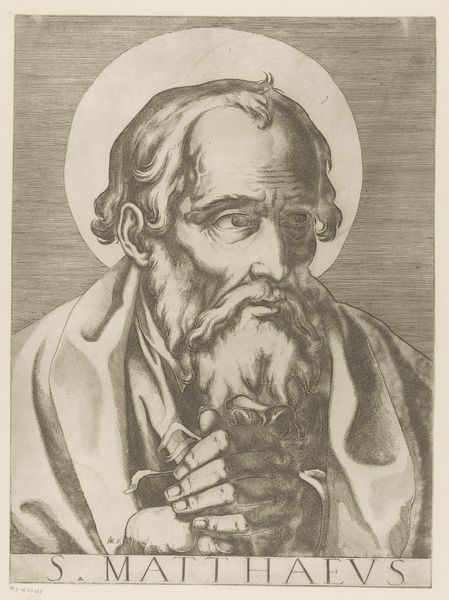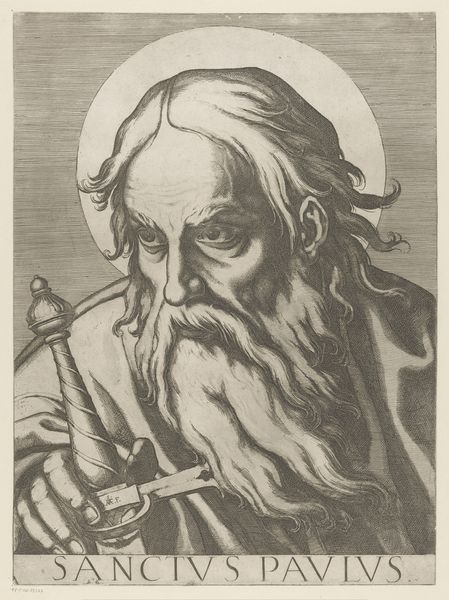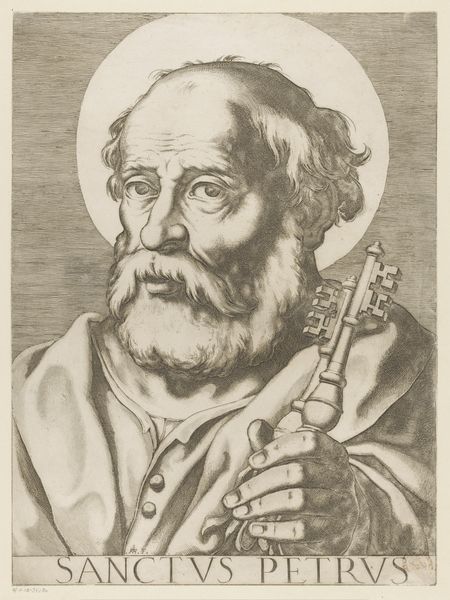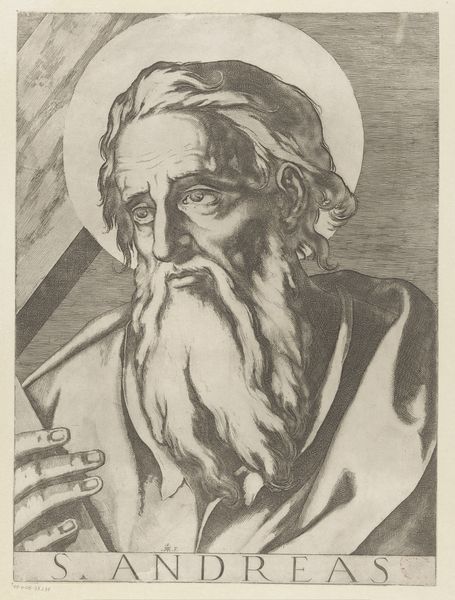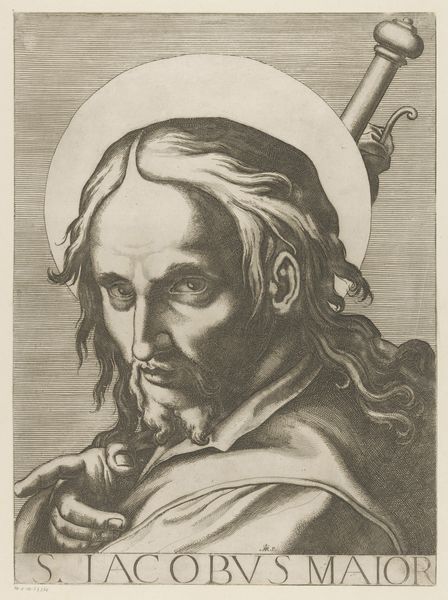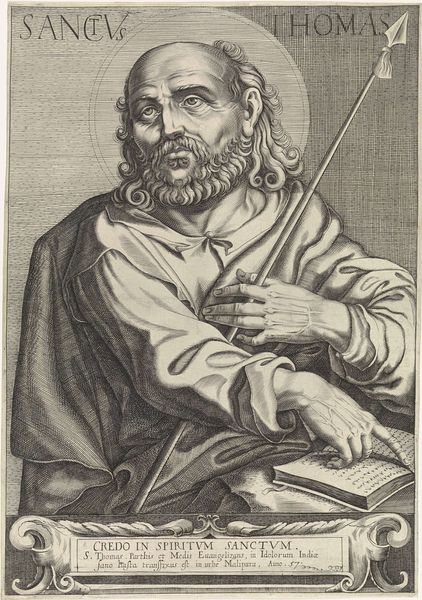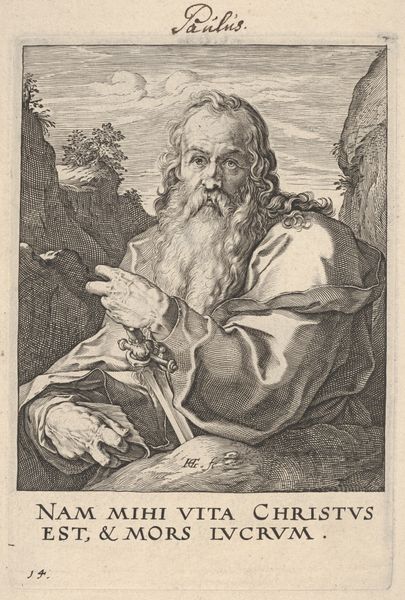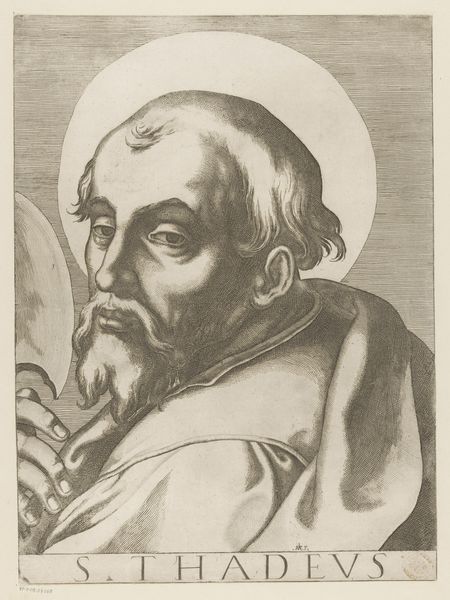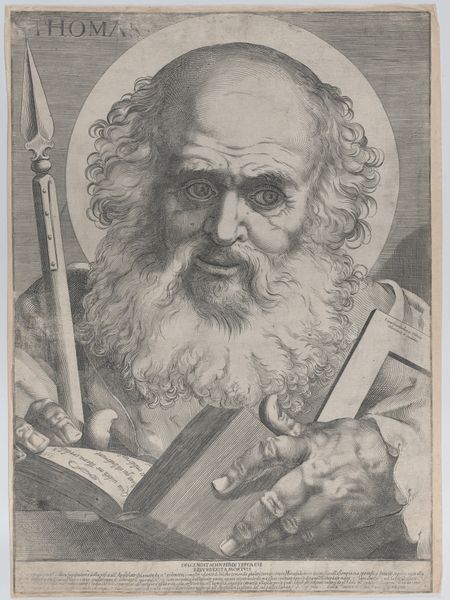
print, metal, engraving
#
portrait
#
baroque
# print
#
metal
#
caricature
#
portrait reference
#
cross
#
line
#
portrait drawing
#
engraving
#
sword
#
realism
Dimensions: height 505 mm, width 374 mm
Copyright: Rijks Museum: Open Domain
Curator: This is "Heilige Filippus," or "Saint Philip," an engraving by Raffaello Schiaminossi dating back to 1606-1607. It's part of the Rijksmuseum's collection. The print captures Philip in a portrait style, complete with a halo and his symbolic cross. Editor: There's a starkness to this portrait. It feels very direct, even severe. I’m immediately drawn to the detailed rendering of his face and beard, contrasting with the almost hastily sketched drapery. What do you make of the varying textures? Curator: The differing textures likely play into the Baroque era's use of dramatic contrast. Schiaminossi, though not as celebrated as some of his contemporaries, operated within the dominant visual language of the time, emphasizing realism alongside idealized religious imagery. This print would have circulated among collectors and the faithful, reinforcing the saint’s image and associated doctrines. Editor: It’s interesting you mention circulation. As an engraving, its materiality is key—metal plate, the physical labor of etching, the paper it's printed on. The availability of such prints facilitated the spread of not just religious iconography, but artistic techniques and styles as well, no? Curator: Precisely! Consider the socio-political impact of readily available religious imagery at that time. Prints like these shaped the visual culture of both public and private religious life. Schiaminossi and his contemporaries had the unique responsibility of presenting these widely recognized icons. Editor: And considering the tools and the production processes of the early 17th century, it's pretty impressive the level of detail Schiaminossi was able to achieve, don’t you think? Also the impact of producing and then spreading through trade and other exchange channels many copies of this iconic persona, must be really remarkable in cultural terms, even today. Curator: Absolutely. We see how prints influenced religious life, spreading the ideals across Europe. They became tools in both belief and in art itself. Editor: Food for thought, isn't it? It is amazing how much information can be communicated just by analyzing one print!
Comments
No comments
Be the first to comment and join the conversation on the ultimate creative platform.
